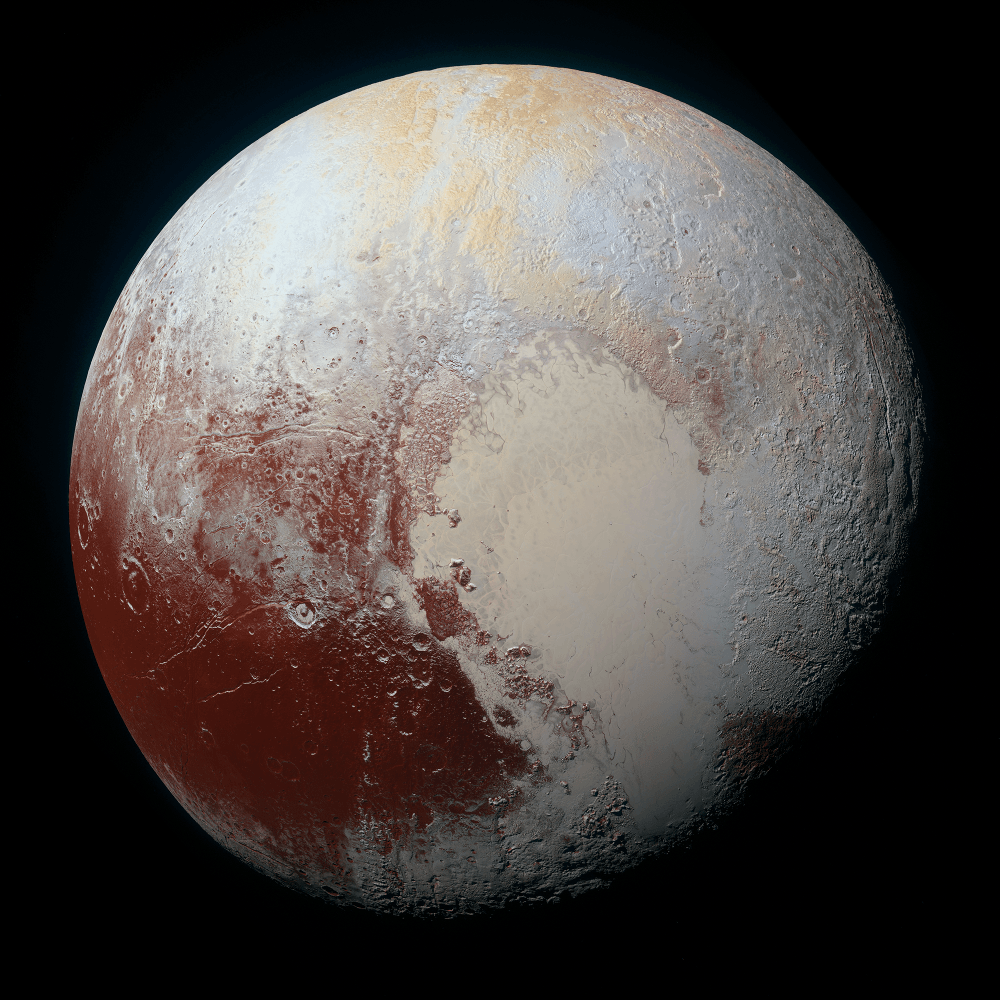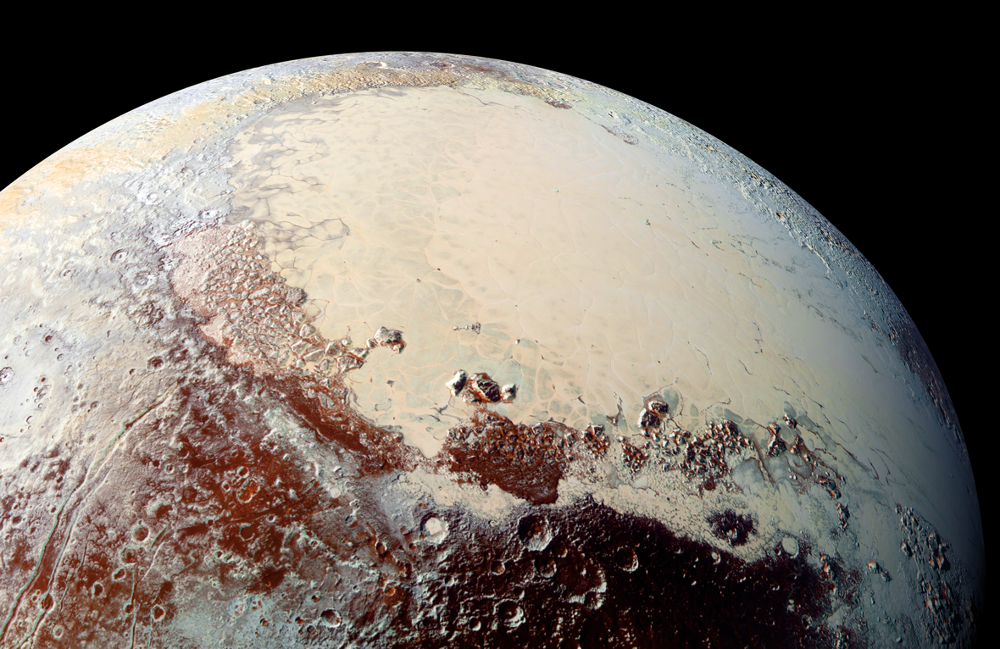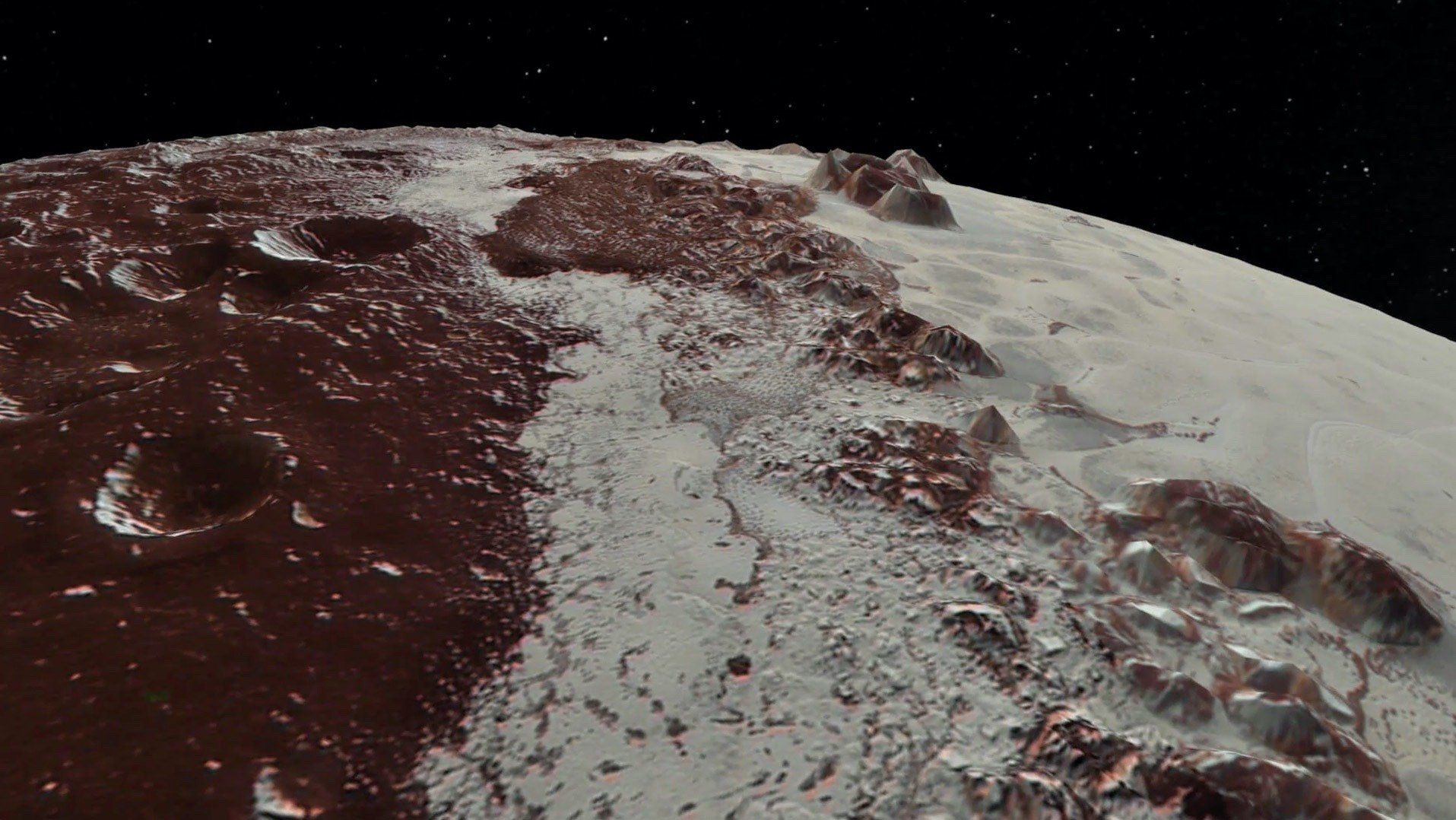This web page is created within BALTICS project funded from the European Union’s Horizon2020 Research and Innovation Programme under grant agreement No.692257.
Pluto
American astronomer Percival Lowell observed the orbits of Neptune and Uranus and concluded that they were affected by the gravity of another yet undiscovered planet (nowadays, it is assumed that the perturbations in the orbits of the distant planets observed by Lowell were measurement errors rather than the gravitational influence of a distant planet).
Lowell calculated the location of Planet X already in 1915 but did not live to see the planet discovered on 18 February 1930, when Clyde Tombaugh, who worked at the observatory named after Lowell, spotted a tiny dot of light on the photographic plates.
When the discovery of a new planet made headlines around the world, the Lowell Observatory received over 1,000 suggestions on how to name the ninth planet. The name Pluto, proposed by eleven-year-old Venetia Burney, was recognised as the best suggestion. On 1 May 1930, the newly discovered planet was named after the god of the underworld in ancient Greek mythology. Also, the name honours Percival Lowell, whose initials are the first two letters of Pluto.
Initial calculations showed that Pluto is about as massive as the Earth. Studies made in 1948 showed that the mass of Pluto is that of Mars, but in 1976, when studying Pluto’s ability to reflect light, it was concluded that it could not be more than 1% the mass of Earth. More precise calculations were made after 1978 when Charon, Pluto’s first moon, was discovered. It was determined that Pluto’s mass is 0.2% of Earth’s mass.
The criteria are as follows:
- The object must orbit the Sun.
- The object must be massive enough to be round.
- There must be no other objects of a similar size in or near its orbit.
If the object meets all three criteria, it is a planet; if only the first two criteria are met, it is a dwarf planet. Pluto was officially given a minor planet designation on 13 September 2006, but some scientists believe Pluto should have remained a planet even if it did not meet these criteria.
Pluto moves around the Sun in an elongated elliptical orbit. At its nearest point, Pluto is 30 astronomical units (4.4 billion km) from the Sun, slightly closer than Neptune, but, at its furthest point, it is about 49 astronomical units (7.4 billion km) from the Sun. It takes Pluto 248 Earth years to complete one orbit around the Sun. It takes Pluto about 6 Earth hours to complete one rotation.
Studies show that Pluto has a solid core, which makes up about 70% of its volume. Above it is a layer of water ice more than 100 kilometres thick. The part closest to the core may be in a molten state. However, the surface is composed mainly of nitrogen ice with small traces of methane and carbon monoxide. In 2015, when the New Horizons spacecraft flew past Pluto, mountains composed mainly of water ice were discovered on the dwarf planet. Water ice is hard as stone at the temperature of -235○C that prevails on the surface of a dwarf planet.
When Pluto is closer to the Sun, the ice on its surface melts and turns into gases, which form a rarefied atmosphere made mainly of nitrogen with small traces of methane. As Pluto moves away from the Sun, its atmosphere freezes and falls to the surface as snow.
Until the New Horizons flyby, very little was known about Pluto’s surface. Even by using the most powerful Earth-based telescopes, it was impossible to get sufficiently detailed images. Therefore, the data from flyby came as a huge surprise — both the layered atmosphere and the dramatically different areas of the surface in colour, structure and age. The New Horizons data also helped to refine the sizes of Pluto and its moons. The dwarf planet has a diameter of about 2,400 km.
The most prominent surface feature is Tombaugh Regio, or “Heart”, a huge white region with a young surface. Its western lobe is called Sputnik Planitia. This plain has formations that are evidence of glacial flow and convection that are reshaping and renewing the surface. The absence of craters indicates that the surface may be less than 10 million years old.
Cthulhu Macula, one of the darkest regions on Pluto, is completely different in both colour and age. The dark colour is probably caused by the deposition of tar-like hydrocarbons on the surface, which form when the Sun’s ultraviolet light interacts with methane and nitrogen in the atmosphere. Because there are many craters in this region, it is estimated to be more than a billion years old.
Pluto has five known moons, the largest of which is Charon. It was discovered in 1978. The four smaller moons — Nix, Hydra, Kerberos and Styx — were discovered when making observations with the Hubble Space Telescope after 2000.
Charon has a diameter of about 1,200 kilometres and a mass ⅛ that of Pluto. Both objects keep the same side towards each other. Because Charon is so massive, the centre of gravity of the Pluto-Charon system is outside Pluto. New Horizons images show that Charon’s north pole is covered by dark material. This is most likely tar-like hydrocarbons that have settled from Pluto’s atmosphere onto the surface of Charon, which is dominated by water ice. There is also a spectacular canyon on Pluto, the Serenity Chasma, which stretches more than 1,000 km across the equator.
Pluto’s other moons are small and orbit two to three times farther away from Pluto than Charon, which is about 20,000 km from Pluto. All four small moons are irregular in shape. They orbit Pluto in a very chaotic way because the small objects are strongly influenced by the gravity of the Pluto-Charon system.
It is most likely that Pluto’s moon system was formed as a result of a massive collision. Debris ejected into the orbit clumped together, forming Charon and small moons, which were originally closer to Pluto. As Charon’s orbit became smaller, the small moons have drifted further away from Pluto.






















